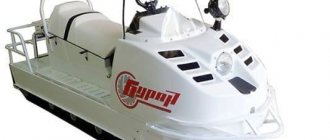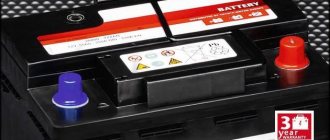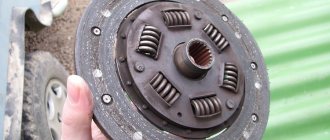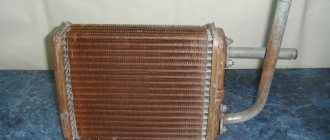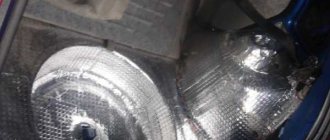There are several categories of trailers that divide them according to their purpose. There are universal and most popular on-board models. Separately, trailed vehicles for transporting watercraft and dump trucks are distinguished. Among this variety there are models whose main purpose is to transport snowmobiles.
This is a rather unique vehicle designed for driving on snow. And since it is unlikely that you will be able to get to snow-covered areas on your own in order to go for a ride, you will first have to resolve the issue of delivering the snowmobile to the place for riding.
Every time using the services of a tow truck or turning to private carriers for delivery is completely unprofitable financially if the snowmobile is used regularly. It is better to get your own trailer. You can buy it or assemble it yourself.
What are the features of such a trailer?
A regular onboard model is not suitable for tasks such as transporting a snowmobile. It can be modified, equipped with the necessary elements and ensure safe and reliable transportation.
But since many people have a flatbed trailer performing important daily tasks, it will become undesirable to modify it. It is better to make a new design with your own hands. Although, if your budget allows it or you simply don’t want to deal with assembly and registration, it’s easier to buy a factory model.
Before making trailers for snowmobiles with your own hands, you need to know some of their features. To begin with, such products are divided into 2 subcategories:
- open;
- closed.
Closed models are more reliable and have an additional level of protection, safety and security of property. And a snowmobile is far from cheap. But purchasing and assembling an enclosed trailer will cost more.
Any car trailer intended to transport a snowmobile must have certain properties and characteristics:
- a reinforced structure is used, since the snowmobile is quite heavy;
- the trailer must have a ladder for simplified loading and unloading of equipment;
- When transporting, the snowmobile should be secured using special rings inside the trailer;
- the loading platform must be suitable for the size of the snowmobile;
- the carrying capacity must correspond to the weight of the snowmobile with a certain margin for transporting additional cargo, auxiliary equipment, etc.
All this will allow you to transport a snowmobile using trailed equipment.
Snowmobile trailer
Today, a considerable number of outdoor enthusiasts give their preference to snowmobiles. But having just a snowmobile is not enough, because it still needs to be delivered to a specific place. Trailers are used for these purposes.
Transportation is often carried out on the most ordinary trailers, but it is still better to purchase a special trailer for a snowmobile. Its advantages are obvious, because such a trailer is equipped specifically for a snowmobile.
And it should be noted that manufacturers offer various types of such trailers. To begin with, we will talk about the existing varieties.
What types of trailers are there?
Types of trailers can be distinguished based on various criteria. First of all, we point out that a trailer for transporting a snowmobile can be:
With the first type, everything is simple: it is a trailer without any cover, equipped only with special fastenings (as well as some additional accessories in the form of, for example, a winch). However, it should be noted that such a trailer has a significant drawback: during transportation, everything that is on the road (snow, dirt, sand, ice, reagents spilled by road services) will fall on the snowmobile. As a result, upon arrival at the site, the owner will have to spend a lot of time thoroughly washing his snowmobile.
Therefore, a more preferable option is another type of trailer - closed. They assume the presence of some kind of protective element that prevents damage to the snowmobile during transportation. Such an element can be an awning stretched over the frame, or a plastic cover. Which one is better? As a rule, it is recommended to choose a cover in the case when it is planned to transport exclusively a snowmobile in the trailer. If, along with it, you are going to place any other items in the trailer, then it is better to choose the option with an awning.
Based on their design features, there are also two types of trailers:
- the first type is a trailer on wheels;
- the second is a sleigh.
But when considering such varieties, it should be borne in mind that a trailer in the form of a sleigh is suitable for transporting a snowmobile exclusively on snow. The wheeled version is the most universal, which determines its prevalence.
Along with these varieties, it is possible to identify many others if other criteria are used as the basis for the classification. For example, trailers can be divided into those with only the rear side opening and those with all sides opening. But the main classifications were discussed above.
About the cost
What is the price of a snowmobile trailer? Obviously, the cost depends on the specific type of trailer, the manufacturer and the presence/absence of additional functions.
For example, to buy a trailer for transporting a snowmobile with a folding tailgate, an awning, treated with an anti-corrosion coating, will cost the buyer 45-50 thousand rubles (excluding the cost of the awning).
A trailer, covered with an awning, equipped with a spring-shock absorber suspension, with an extended drawbar (which has a positive effect on handling), the sides and bottom of which are made of special laminated plywood, resistant to moisture, will cost about 60-65 thousand.
Or you can buy a trailer for two snowmobiles for 80 thousand. It will be an open trailer with a low platform and small diameter wheels to ensure high stability.
Finally, the cost of a two-axle trailer with a plastic cover, the front and rear sides of which fold down, will be about 120-130 thousand.
Nuances when purchasing
To buy a trailer for a snowmobile, you will need to consider certain points:
- It is important to decide on the type of trailer. We have already noted that a wheeled trailer would be a more convenient option. As for whether it should be closed or open, we should proceed from the following. It is recommended to purchase an open trailer when transportation is planned over relatively short distances. But even in this situation, you should stock up on a tarpaulin for your snowmobile in case of precipitation. A closed trailer will always reliably protect your snowmobile from all kinds of external influences;
- Of course, when choosing a trailer, you should proceed from the size of the snowmobile. It’s even better to choose a larger trailer, then you can easily accommodate all the necessary tools in it. Along with the dimensions, also consider the load capacity of the trailer. This parameter is especially important if you are planning to purchase a tandem trailer (i.e. for 2 snowmobiles);
- It is also recommended to purchase trailers whose bodies are galvanized. This will protect the trailer from corrosion and thereby increase its service life;
- We also note that the preferred option is a trailer with a bottom made of laminated plywood (moisture-resistant) or high-strength plastic;
- Be sure to match the trailer's specifications to your vehicle's specifications. This will prevent the possible occurrence of dangerous situations when moving;
- Finally, take a look at the additional features available. After all, it is at their expense that manufacturers strive to attract buyers when selling trailers for snowmobiles. Among the many functions, the most relevant are the following: special rollers for a snowmobile, winch, folding drawbar.
Summing up
We are convinced that there are plenty of varieties of trailers for snowmobiles. Some, however, can make a snowmobile trailer with their own hands by converting a regular trailer. What does such a refurbishment involve? First of all, the suspension needs to be strengthened. Skilled craftsmen advise using, for example, Zhiguli. It is recommended to place the shock absorbers at an angle: in this case they will not stick out.
But the most important difference between such a trailer and a regular one is the presence of a breakable frame. The rear part of a homemade snowmobile trailer is made to fold down, which makes loading/unloading equipment much easier. It is also recommended to equip the trailer with snowmobile mounts when converting.
Therefore, this is also a good option, if only you are confident in your own capabilities. In any case, a trailer is a necessary item for every snowmobile owner.
Source: https://pulyaet.ru/articles/pricep_dlya_snegohoda_kakie_bivayut_vidi_ceni_na_nih_i_osobennosti_vibora
Blueprints
Based on the dimensions of the snowmobile itself, you can create a suitable trailer for it. This is the first place to start. Take measurements of the dimensions of your equipment or look at them in the instruction manual and technical data sheet.
In any case, you need to know the dimensions of the snowmobile in order to choose the appropriate dimensions of the future trailer based on them. It's difficult to give specific numbers because they vary from person to person due to the wide variety of snowmobiles sold.
But if you make a trailer more than 2 meters wide, this will allow you to transport two snowmobiles at once. It is only important to make sure that the load capacity is sufficient for operation under such a load. Only the motorist himself can decide exactly which trailer will be best for transporting a snowmobile. After all, a number of nuances are taken into account.
It is recommended to compare the overall dimensions of the snowmobile and the dimensions of the factory trailer. In its image and likeness, you can create your own transportation equipment.
For example, factory trailers designed for snowmobiles have the following internal dimensions of the loading platform:
- 3450x1370 mm;
- 3400x1350 mm;
- 3200x1400 mm;
- 3750x1370 mm.
This is the length and width respectively.
Your drawing should be based on several parameters:
- snowmobile dimensions;
- design features of the car;
- existing restrictions.
In terms of restrictions, it is worth indicating the following figures:
- The length of the trailer cannot exceed 12 meters. Although in the case of snowmobiles this does not play a big role. Typically, this technique is noticeably shorter than the maximum dimensions.
- The total length of the road train, that is, the car and trailer, cannot exceed 18.35 meters.
- The trailer height limit is 4 meters.
- The width cannot exceed 2.55 meters.
Based on the presented figures and taking into account the dimensions of your own snowmobile, you can begin to create a drawing for the trailer.
In this case, it is not at all necessary to carry out the drawing yourself. Now there are many ready-made options with fairly universal sizes. There are also developments for specific snowmobile equipment. But it is not recommended to start work without a drawing. This can only be done by specialists with extensive experience. For the rest, a drawing with an exact indication of all dimensions is required.
Regular trailer vs snowmobile
Many people think of using a standard trailer to haul literally everything, including a snowmobile. But in reality, you will not be able to properly transport such equipment on a short flatbed trailer.
This is due to several factors:
- they are not intended for snowmobiles;
- equipment will be scratched and broken;
- the size of the platform does not correspond to the dimensions of the snowmobile itself;
- there are no special amplifiers;
- the snowmobile may exceed the permitted load on the axle and wheels;
- there are no fastenings and safety elements to protect the transported equipment, etc.
Remember that regular trailers are absolutely not suitable for transporting snowmobiles. Attempts to remake them or adapt them for such tasks will end in failure and the need to buy not 1, but 2 new vehicles at once.
There are certain transport regulations that impose requirements on caravans. If you are going to transport snowmobiles on them, then the vehicles must:
- have a reinforced gangway;
- have the necessary strength;
- be equipped with rings for fixing equipment;
- be equipped with special mechanisms that prevent contact and friction between 2 snowmobiles;
- have the appropriate dimensions.
Some people also buy special sleds for snowmobiles to transport people. An interesting and fascinating thing, I tell you. Unforgettable feelings. But here it is important to follow the transportation rules so that during the next maneuver the sled does not skid and turn over. Safety comes first.
Necessary parts and components
To assemble a trailer for snowmobiles with your own hands, you will need to purchase a certain set of spare parts and materials.
The main ones are:
- spar created on the basis of a metal channel;
- 3 cross members (rear, middle and main);
- 2 brackets necessary for fixing the shock absorbers;
- rear bumper support;
- drawbar;
- factory hitch.
It is recommended to buy a coupling device from a trusted manufacturer. It is subject to increased requirements when tested for compliance in a laboratory to obtain a certificate. Therefore, homemade coupling structures may be rejected, and it will not be possible to register such a trailer.
Additionally, you will need to organize a braking system. In general, for trailers of category O1 with a gross weight of up to 750 kg. no trailer required. But for safety and efficiency it is better to install them. When making a trailer of category O2, that is, with a mass of 750-3500 kg, the installation of an inertial braking system will be a prerequisite.
You will need a kit consisting of:
- bracket;
- beams;
- stop;
- axles;
- bushings;
- headscarves;
- racks;
- master brake cylinder;
- coupling body;
- bolts;
- nuts;
- trailer frame.
This is an indicative set of spare parts and components. Depending on the specific situation, it can be reduced or expanded.
Assembly of the structure
If you are a specialist in the field of working with metal, welding and cars, then assembling a good and effective trailer for transporting a snowmobile with your own hands will not be difficult.
The step-by-step assembly can be described something like this:
- First, the trailer frame or frame is welded;
- then a clamp is installed to secure the wheel pendulum axle;
- at the next stage the lever is fixed;
- suspension elements are mounted on the finished frame;
- A ladder must first be welded to the frame, which is necessary for lifting and lowering the snowmobile.
If we consider production in more detail, we can give the following example of step-by-step instructions. Here we will use a ready-made base, but without sides, from a regular flatbed or boat trailer.
Creating a snowmobile trailer involves the following procedures:
- using a metal profile with a section of 30x30 or 30x20 mm, a rectangular base is created by welding;
- the structure must be up to 2.5 meters wide and up to 7.5 meters long (otherwise there is a risk of not being certified);
- crossbars are attached parallel to the narrow side of the base;
- the step between the crossbars should be about 50 cm;
- the resulting structure is connected to the selected base using bolts and nuts;
- the optimal position of the frame on the platform is selected, taking into account the center of gravity;
- the axle should be shifted 3-5 cm forward relative to the center of gravity to simplify tilting the trailer for easier loading and unloading of the snowmobile;
- Elements for the sides are cut from the profile;
- a height of around 25-40 cm is quite enough for safe and reliable transportation of a snowmobile;
- to cover the floor and walls, you can use sheets of plywood;
- for the walls, plywood with a thickness of 10 mm is sufficient, and for the floor it is better to take 15-20 mm;
- metal rings necessary for securing the snowmobile with belts during transportation are attached to the floor using a strong bolt connection;
- using welding and hinges (such as piano hinges), a ladder is attached to the rear;
- The hinges allow it to be easily lowered and raised after loading and unloading the snowmobile.
Assembling the base with your own hands is more difficult. To do this, you will need to weld the frame, connect the drawbar and coupling device to it, and also install the suspension elements and wheel axles. But since all components are purchased from manufacturers and not assembled with your own hands, it is only important to adhere to the installation rules and ensure a strong connection of all components.
Please note that such trailers are subject to increased safety requirements. Therefore, if there are any inaccuracies, there is a possibility of being denied a certificate. And without it, it will not be possible to register and register the trailer.
DIY FRIEND
A self-propelled car trailer pulls a car, not a car trailer. The trailer, like in the sensational video, was assembled masterfully by the guys from Nizhny Novgorod. In May 2021, after a conversation with Alexander, the idea of a joint project to make a self-propelled trailer, which should move backwards and shock others, appeared from the YouTube channel Garage-54. This was the case in a Norwegian-Swedish video that was released in 2021, where an automatic reversing system for a car was advertised). Its name is Volkswagen Trailer Assist! But time passed, and there was no answer from Alexander. We decided to implement this project ourselves.
TRAILERS and everything connected with them is our topic! It was interesting to repeat a similar product, but to talk in more detail about the main points that were not included in the frame. We are interested in this, and even more unanswered questions have arisen! At first it seemed like it was a fake: transparent walls, a white-looking trailer, straight-line movement of articulated vehicles when moving backwards, clear turns and movement in a circle. Can a trailer do all this? How is this even possible? Or maybe it's just skillful editing?
But as we slowed down and looked at the picture of the original video, interesting details that we encountered during the production process became clear and we had answers!!!
The carburetor car VAZ-21099, which was scrapped but had a working engine, was taken as a basis. Overnight, half of it remained - the front part, a snow drift on which we showed our subscribers on March 1, 2021. Then, by mistake, we first sawed off the roof of the car belonging to the security guard, but what can you do - we made a little mistake!) We promised to make amends and moved on . During the night he was “cut off”, but at the same time remained on the move!)
And then came the painstaking work of integrating the frame made of profile pipes into the rest of the car.
The floor was covered with sheet metal, painted and primed. Inside they made supports for the dashboard. A fire extinguisher was installed.
They decided to paint the frame a “cheerful” orange color.
At the same time, monolithic 3 mm polycarbonate was purchased - essentially it is transparent plexiglass, only with high strength properties. We were testing glue - we needed to tightly and reliably cross plastic with metal, as a result of which we settled on MS-polymer from Sika with a primer. We chose perforated white film and applied the logo.
I had to tinker with the doorways - back and front. Hinges, locking rod, cams and latches, handles and rubber seal... Wild Tatar did this for the first time. When he finished his work, it turned out that the seal was installed in the opposite direction - back to front. This is impossible, but it’s a fact that everything worked out. We decided to leave it and not redo it - with us) Let the seal be in the opposite direction!)
They also glued polycarbonate to the roof, but not a monolith, but a 6-millimeter cellular one. Black ORACAL was applied for blackout. And even this turned out to be not enough. The van was translucent. But it's close. We watched the video again. The wall behind the pilot was also tinted! And even part of the upper glass.
Then we adjusted the drawbar hook to a specific car, since the landing of the trailer turned out to be quite low. They installed a pole, d
- Tweet
Crafting features
In order for transportation to be carried out reliably, safely, and for the trailer itself to serve for many years, you must first take into account some points.
This applies to the following recommended components:
- It is worthwhile to provide high-quality strengthening of the front and rear suspension. If you have a spring suspension, then adding a few sheets will be enough. This is done quite easily and quickly. Usually you only need to replace the mounting bolts with longer ones to securely fix the reinforced suspension.
- Shock absorbers located on a slope. If you make such a system, the shaking when transporting a snowmobile will noticeably decrease. This will minimize possible damage to the snowmobile and keep the trailer intact, driving even on very bad roads and overcoming off-road conditions.
How correct and truly profitable it is to start assembling a trailer for a snowmobile with your own hands is a rather controversial question. But everyone makes their own decision.
A question of cost
It is very difficult to name the exact amount that it would cost to assemble a homemade trailer designed for transporting snowmobiles.
It all depends on what components you have, what you have to buy and what quality these or those components will be.
It is usually believed that self-assembly allows you to save 2 times compared to buying a factory trailer. But this is conditional, since sometimes, taking into account all the costs, the cost of a homemade product can exceed the cost of a similar factory trailer.
In addition to the costs of components, spare parts, suspension elements, you will have to spend money on certification, laboratory testing, etc.
For example: budget trailers from trusted companies cost from 35-40 thousand rubles. But it’s better to immediately look at models costing from 50-60 thousand rubles. There are models with a price tag of 300-500 thousand. Now think about whether to buy it or make it yourself.
Cost of new and used
The price is affected by the specific version of the device, the manufacturer and the presence or lack of additional functions and components. A trailer with a folding tailgate, an awning, coated with an anti-corrosion substance can cost about 40-50 thousand rubles.
If it is covered with an awning, equipped with spring-shock-absorbing suspension, and the material for the sides and bottom is laminated plywood (which is moisture resistant), such a device will cost 60-70 thousand rubles.
Regarding used options, you can find one and a half to two times cheaper than the regular price.
The cost is influenced by the degree of wear and tear, the availability of the necessary equipment and other parameters.
When making such a purchase, you need to focus on the following criteria - type of trailer, service life, materials from which the body or bottom is made, additional functions and equipment.
You can read recommendations on how to make a homemade snowmobile from a motorcycle in our article.
If you're stuck and have no one to help you, then a manual snowmobile winch is a must-have.

